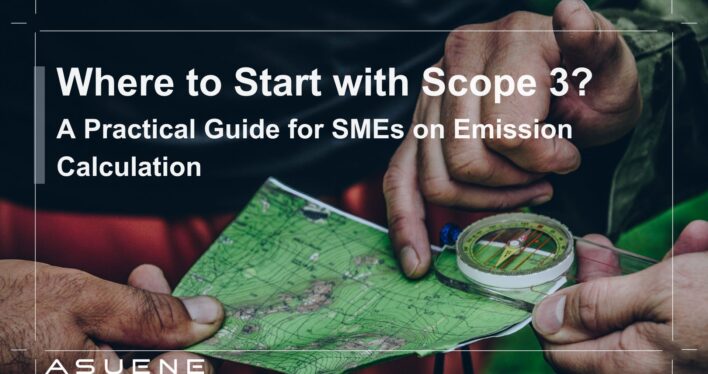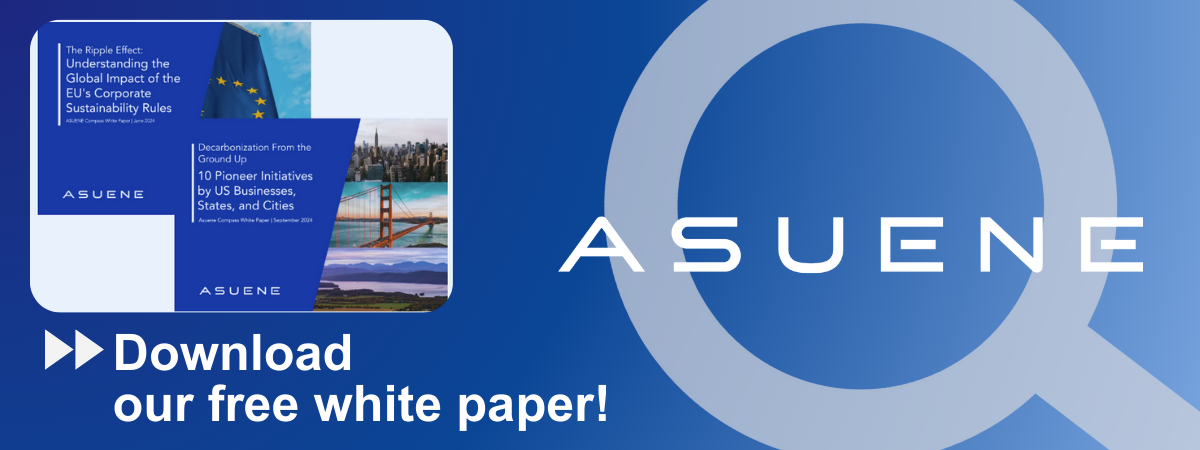- Article Summary
-
Why Scope 3 Matters for Small and Medium Enterprises
Scope 3 emissions—those generated across a company’s value chain, both upstream and downstream—are often the largest part of an organization’s carbon footprint. While large corporations are increasingly required to report Scope 3 data under new regulations (e.g., CSRD, SEC), their suppliers—many of whom are SMEs—are also being asked to measure and share this information.
However, calculating Scope 3 emissions can feel overwhelming for smaller businesses that lack the resources or expertise of multinationals. This guide breaks down how SMEs can get started, even with limited data and budgets, using practical tools, simplified methods, and industry templates.

Understand What Scope 3 Covers and Where Your Impact Lies
Scope 3 includes 15 categories, ranging from purchased goods to business travel, employee commuting, product use, and end-of-life treatment. Not all categories apply to every SME. The first step is to identify the relevant categories where your business has a meaningful impact.
Key Actions:
- Review all Scope 3 categories in the GHG Protocol
- Map your business activities to applicable categories
- Prioritize categories based on volume, influence, and data availability
Example:
A packaging manufacturer might focus on:
- Category 1: Purchased goods and services
- Category 4: Upstream transportation and distribution
- Category 12: End-of-life treatment of sold products
Start with Available External Data Sources
Many SMEs do not have direct access to emissions data from their suppliers or customers. That’s where external databases and emissions factors come in.
Sources to Use:
- National Databases: UK DEFRA, US EPA, Japan CFP Program
- GHG Protocol Tools: Category-specific calculation spreadsheets
- Industry Associations: Many publish sector-specific emissions factors
Tip:
Use emissions factors (e.g., kg CO2e per kg of material or km of transport) and multiply by your procurement or operational data (e.g., total kg purchased).

Use Simple Estimation and Spreadsheet Templates
SMEs can start with spreadsheet-based tools to estimate emissions with basic inputs. It is not necessary to invest in expensive software from day one.
Steps:
- Download GHG Protocol or industry-specific Excel templates
- Plug in activity data (e.g., fuel usage, material volume, transport distance)
- Use built-in emissions factors or add your own
Benefit:
This allows for a first-level estimation that can be refined over time as better data becomes available.
Address Sector-Specific Requirements with Templates
Some industries offer tailored guidance and templates for Scope 3 calculation. Leveraging these can help SMEs ensure relevance and accuracy.
Examples:
- Electronics: iNEMI and JEITA templates for component manufacturers
- Textile: Higg Index for apparel value chains
- Construction: CO2 performance ladder or EN 15804-based LCA tools
Tip:
Check with customers or industry groups to align with their preferred format.
Plan for Incremental Improvement and Communication
Scope 3 calculation is not a one-time exercise. It evolves with better data and process maturity. The goal for SMEs should be to build capacity and transparency over time.
Strategy:
- Document assumptions and data sources
- Update estimates annually
- Communicate progress and gaps transparently to customers
Visual Aid:
A sample Scope 3 roadmap for SMEs showing Year 1-3 development: from estimation to partial primary data to full value-chain reporting
Conclusion: Every Step Counts Toward Net Zero
Scope 3 may be complex, but it’s not impossible. SMEs play a vital role in the global decarbonization effort, and their proactive engagement in emissions tracking strengthens their credibility, resilience, and relationships with major buyers.
By starting small, using external data, and applying industry-specific tools, SMEs can make tangible progress in understanding and reducing their carbon footprint. In the race to net zero, incremental steps are not just acceptable—they are essential.
Why Work with ASUENE Inc.?
Asuene is a key player in carbon accounting, offering a comprehensive platform that measures, reduces, and reports emissions, including Scope 1-3, with expertise in decarbonization. Asuene serves over 10,000 clients worldwide, providing an all-in-one solution that integrates GHG accounting, ESG supply chain management, a Carbon Credit exchange platform, and third-party verification.
ASUENE supports companies in achieving net-zero goals through advanced technology, consulting services, and an extensive network.


